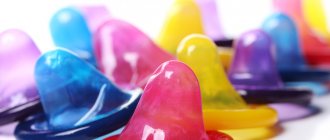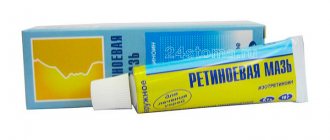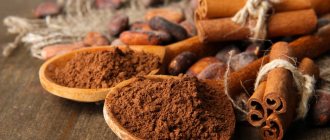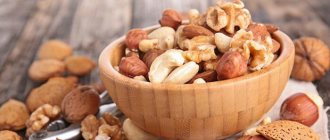In the last few years, a strange product has appeared on supermarket shelves and markets, which some have only heard of, while others have been actively using for many years - ginger root.
Its health benefits are undeniable. It is known for its healing properties against colds, flu and other ailments. It is used in cooking as a seasoning, in cosmetology, as an active component of various creams and masks. However, experts say that it can bring not only benefits, but also harm. But first things first. First, let's figure out what it is.
Powerful antioxidant
The European nutrition journal Nutrition published research on 120 plant foods that have antioxidant properties. Ginger turned out to be one of the leaders. The main property of antioxidants is the suppression of free radical activity. They are capable of seriously damaging the body's cells at the molecular level due to their oxidative properties, causing aging of the body and the development of various diseases. And proper nutrition helps fight them.
Numerous studies have shown that ginger not only suppresses the production of free radicals, but also stimulates the body's own synthesis of antioxidants. At the same time, fresh ginger demonstrates better antioxidant properties, “competing” in effect with pure ascorbic acid. In general, many of the beneficial properties of ginger are a consequence of the fact that it contains the plant alkaloid gingerol in the form of essential oil, which gives the root a pungent taste.
Ginger raw materials
Ginger rhizomes - rhizoma Zingiberis, ginger oil - oleum Zingiberis. The dug up ginger rhizomes are cleared of soil, quickly washed, crushed and dried at 50-60 °C; sometimes the rhizomes are cleared of the cork layer. The shape of ginger rhizomes is characteristic - in the form of strongly flattened laterally, short and irregularly branched pieces, emitting a peculiar sweetish spicy aroma. Rhizomes are sold unpeeled or corked. Unpeeled ginger has a light beige color with frequent thin longitudinal grooves, leaf scarring and transverse wrinkles; peeled ginger is pale grayish in color, with barely noticeable longitudinal thin grooves and a powdery white coating (the result of pollination with lime or gypsum). The color of the rhizome at the fracture is more intense than on the surface, somewhat darker along the periphery; Usually the fracture surface is bristly from randomly protruding, exposed fibers of numerous conductive bundles. The taste is hot, the smell is spicy, aromatic.
Antiviral agent
The antiviral properties of ginger are also well known. The fact is that it contains vitamin C and B vitamins, which stimulate the immune system. The gingerol mentioned above both stimulates heat production and suppresses inflammation. Of course, ginger does not replace medications prescribed by a doctor, but if you additionally take grated ginger tea with lemon and honey, you can support the body and alleviate your condition from flu and colds. In its composition, ginger is close to garlic, only without a specific smell.
To prevent various diseases, it is enough to add ginger to food as a spice, brew ginger tea and infusions.
Storage conditions
There are several options for storing ginger at home. It is better to store fresh roots in the refrigerator, pre-packed in cling film. The film will protect the roots from drying out. This way it will keep for up to two weeks. Can be frozen in the freezer. Then it is better to first clean and cut the roots for ease of use.
An alternative way is to dry it a little and wrap the plant in thick paper. Can be stored at room temperature in a dry place - shelf life is about a month. The dried product is stored mainly in fabric bags in a dry place at room temperature - shelf life is up to six months.
Another option is to grate or cut into thin slices and dry in the oven at a temperature of 500. Readiness can be determined by touch (ready-made slices break easily). In this form, it can be stored in a tightly closed jar for up to several years.
Another way is to pour honey over the ginger. This will mutually enhance the properties of ginger and honey. The shelf life of such a product is up to six months.
The shelf life of such a product is up to six months. Candied fruits are made from parts of the plant, as well as marinade - it must be stored in a tightly closed container.
If you have a lot of fresh produce, you can squeeze juice out of it using an electric juicer. It is not recommended to store or consume the juice in its pure form. Usually, an alcohol tincture is prepared from the juice, or from the root cut into slices - 50 to 50 juice and alcohol. A tightly closed bottle of tincture can retain healing properties for up to 3 years. But, if the bottle has already been opened, then you can use the contents within 21 days; on the 22nd day, everything that remains should be thrown away.
The tincture is consumed several times in tea, warm milk or fruit drink. Attention! The tincture is not added to hot drinks. The tincture is used to treat colds and infectious diseases.
Preventing nausea
Ginger is one of the best remedies for preventing and treating nausea caused by digestive problems, motion sickness and pregnancy. The journal Travel Medicine published an article with the results of an interesting study. Before a six-hour whale-watching boat trip with more than a thousand tourists, they were all given 500 mg of ginger. As a result, the participants of the walk managed to avoid seasickness; they did not even have to take medicine for motion sickness.
Experiments were also conducted with pregnant women suffering from toxicosis. Taking 1 gram of ginger per day for 4 days gave a significant improvement in the condition - nausea decreased.
Ginger and its properties
Chemical composition of ginger
The main value of ginger is its rich chemical composition. The characteristic pungent taste of the plant root is due to the phenol-like compound gingerol. In 2021, Spanish doctors and biological scientists José Allu and Iñaki Lete conducted clinical studies, through which they found that gingerol has a positive effect on the activity of afferent neurons of the vagus nerve: it can improve the condition of patients experiencing severe nausea, not only with indigestion, but and during chemotherapy. The substance also speeds up metabolism and promotes the breakdown of fats.
The aroma of ginger is given by aromatic oils that contain the substances camphene, cineol, bisabolene, borneol, citral, linalool, as well as α- and β-zingiberenes. Citral is a strong antiseptic and anti-inflammatory agent and is used medicinally to lower blood pressure. Linalool has a calming effect that affects the cardiovascular and nervous systems.
Ginger root also contains vitamins C, B1 and B2. Ascorbic acid is involved in the production of collagen and is an immunomodulator (which is why ginger is considered one of the best remedies for the prevention of colds). Vitamin B1 (thiamine) is used in the complex treatment of gastric ulcers, intestinal atony, and diabetes. In addition, thiamine relieves tension in the nervous system and general fatigue of the body. Vitamin B2 (riboflavin) is essential for healthy skin, nails, hair and normal functioning of the thyroid gland and gastrointestinal tract.
Beneficial features
In Chinese medicine, ginger root is considered a cure for “cold” diseases caused by hypothermia or overexertion (stress). At the same time, fresh ginger root and powder are used to treat sometimes completely different diseases. Chinese doctors believe that fresh ginger is used to treat colds, stop coughing, and ease phlegm. Dried ginger in the East is used to treat digestive disorders, asthma and persistent cough.
Benefits of ginger for men's health
One of the most controversial characteristics of ginger is its aphrodisiac properties. Doctors talked about the fact that this spice supposedly has a positive effect on men’s health back in the Middle Ages. Nowadays, many dietary supplements with the dried root of the plant are advertised and sold, the manufacturers of which promise a dramatic improvement in potency, but in reality, ginger is not a panacea.
However, thanks to the same gingerol, ginger actually stimulates blood circulation, lowers cholesterol levels and helps restore vascular elasticity, which, in turn, can restore potency. And the microelements contained in ginger root, when consumed regularly, stimulate the production of the main “male hormone” - testosterone. However, it should be used with caution and preferably not as the main medicine, but as an addition to medications prescribed by a doctor.
-20%
160 rub. 200 rub.
Herbal tea Tea “Ginger lemongrass”, loose leaf, 100 g
0 reviews
70 rub.
Ginger tea Heritage of Nature “Ginger with lemon balm and lemon zest”, 20 bags
0 reviews
70 rub.
Ginger tea Heritage of Nature “Original Ginger”, 20 bags
0 reviews
70 rub.
Ginger tea Heritage of Nature “Ginger with Lemon”, 20 bags
0 reviews
290 rub.
Black tea Shennun “With ginger”, large leaf, 100 g
0 reviews
495 rub.
Ginger tea Sonnentor “Energy”, with spices, loose leaf, 100 g
0 reviews
495 rub.
Ginger tea Sonnentor “Lemon with spices”, loose leaf, 80 g
0 reviews
Choose ginger tea on TEA.RU
Ginger for women's health
In some ways, the effects of ginger on women's health are similar to those on men's. Constant consumption of ginger in various forms has a beneficial effect on blood circulation, including increasing blood circulation in the pelvic organs.
The substance gingerol, which gives ginger its characteristic taste and smell, is known to effectively combat nausea and vomiting. It can be consumed fresh during pregnancy or brewed with lemon and sugar to relieve symptoms of toxicosis, but you must first consult with your doctor.
Ginger for weight loss
The fact that ginger really helps you lose weight is beyond doubt. In 2021, the English-language portal PubMed, created by the US National Center for Biotechnology Information to publish scientific materials in the field of medicine and biochemistry, published a collection of articles and statistical data proving this fact.
Scientists have found that 2 substances are responsible for more efficient breakdown of fats when consuming ginger - the same gingerol and a similar phenolic compound shogaol. They reduce appetite and “stimulate” metabolism.
Ginger for weight loss can be used in several ways: fresh in vegetable and fruit salads, as an ingredient for smoothies and green cocktails, and also in the form of ginger tea.
Before you start using ginger for weight loss, you should consult a gastroenterologist or therapist to rule out a possible allergic reaction and exacerbation of diseases of the gallbladder and gastrointestinal tract.
Ginger tea to boost immunity and for colds
The most popular reason why we remove ginger root from the depths of the refrigerator is a cold or ARVI. Sometimes it even seems that ginger tea with lemon is just a promoted placebo, but the scientific community is in solidarity with traditional medicine on this issue.
Ginger rhizome contains essential oils and vitamins that do not have a direct effect on pathogens (viruses and bacteria), but change the immune response of cells to factors damaging the body systems.
Reduced inflammation and pain
One of the reasons why oriental doctors love ginger so much is that it has anti-inflammatory properties, which is also confirmed by scientific research. For example, 247 patients with knee osteoarthritis and pain were given ginger extract daily for six weeks. After a month and a half, they reported less pain when standing and walking, and they were taking fewer pain medications. It is possible that these studies will lead to the creation in the future of a new drug that will help in the treatment of osteoarthritis.
In addition, ginger reduces muscle pain resulting from injury or exercise. This was the subject of another study in which 74 volunteers took part. After intense training, they received raw or heat-treated ginger, and as a result, pain decreased within 24 hours. It turns out that ginger does not lose its analgesic properties even when cooked. The same can be said about the effectiveness of ginger in relieving symptoms of painful menstruation and migraines. Participants in the experiment who suffered from severe headaches received ginger powder, and its effect was the same as that of drugs, but no side effects were observed.
Product Description
If you have only seen ginger as a beige or yellowish-gray root, then you will be interested to know what the whole plant looks like. The plant is a perennial. Its home countries are predominantly in tropical and subtropical climates (Australia, India, Barbados, South Asia). The largest exporter is China.
You can grow ginger in your own garden or on a windowsill, although this will require creating favorable conditions. It is a trunk like a reed, about one and a half meters in height with spike-shaped inflorescences. Flowers can be various shades of yellow, as well as from beige to brown. The plant reproduces by rhizomes. The roots themselves are in the form of medium-sized tubers (somewhat reminiscent of Jerusalem artichoke roots, but flatter). They are used after peeling them. In the middle, the root is fleshy and sinewy, it contains a lot of juice. The taste is a combination of hot, spicy and sweet.
Use both fresh roots and dried, crushed into powder. You can see them sugared or pickled (often served as a condiment for sushi). Of course, the best and healthiest thing is fresh roots. As a seasoning, they are added to various meat, vegetable and fish dishes; they make tea with them. In Europe, the plant became known in the middle 14th centuries, when sailors brought it there. It gained particular popularity at a time when the plague was raging in Europe. People believed that its medicinal properties protected against plague infection. The plant began to be widely used in the 16th century, after it was brought to America.
Help with cancer
Most patients undergoing chemotherapy suffer from nausea and vomiting. According to scientists from the University of Rochester Medical Center, when ginger is taken along with regular antiemetic medications, nausea is reduced by 40%. The James P. Wilmot Cancer Center in Rochester conducted a study of 644 cancer patients who suffered from nausea after three more rounds of chemotherapy. Participants in the experiment were divided into groups and received different dosages of ginger three days before the course. chemotherapy. The greatest effectiveness was demonstrated by doses of 0.5 g and 1 g of root. Such a discovery certainly improves the quality of life of cancer patients and significantly alleviates their condition.
As already mentioned, the main component of ginger is the alkaloid gingerol - it is this that gives the root its spicy-pungent taste. It turned out that this substance has anti-cancer properties and can reduce the size of tumors by destroying malignant cells. However, this does not mean that horned root is a cure for cancer. Research on this topic continues!
Harmful use
Despite the fact that ginger is a storehouse of vitamins, there are certain groups of people who are strictly prohibited from consuming it. These groups include people who suffer from:
- recent bleeding;
- chronic gastrointestinal diseases;
- respiratory diseases;
- allergic reactions.
It is also not recommended to use ginger, even in small quantities, during pregnancy and breastfeeding, since it is unknown how the body will react to this plant in this state. In addition, it is undesirable to consume more ginger than required per day. The calculation is made based on the following indicators: 2 grams of plant root per 1 kg of person’s weight.
To strengthen blood vessels
Ginger is very beneficial for blood vessels. It contains compounds that thin the blood - this reduces the likelihood of blood clots and relieves pressure on the walls of blood vessels. In addition, ginger root contains the polysaccharide inulin, which reduces the level of low-density lipoprotein (LDL) - the so-called bad cholesterol. Thus, by including ginger in your diet, you can minimize the risks of developing atherosclerosis. This also reduces the amount of triglycerides - lipids circulating in the blood. If there are too many of them, there is a risk of developing many diseases, for example, pancreatitis or cardiovascular pathologies.
Scientists conducted experiments on mice, giving them 250 mcg of ginger extract every day for 10 weeks. As a result, the area of atherosclerotic lesions decreased by 44%, the number of triglycerides decreased by 27%, and the level of LDL by 33%. Remember that in no case should you combine ginger with blood thinning drugs - the effect may be too strong.
Chemical composition of ginger
Ginger rhizomes contain: from 0.25 to 3.5% essential oil, which is based on sesquiterpenes alpha- and beta-zingiberins (up to 70%) - they give the rhizome a characteristic ginger smell, in addition, the essential oil contains the sesquiterpene alcohol zingiberol , zingerone ketone, cineol, borneol, methylgingerol, monoterpenes (alpha- and beta-pinene, camphene, δ-3-carene, beta-philandrene), bisabolene, linalool, geraniol, farnesene, gingerol resinous substance, consisting of a mixture of various gingerols, gingerone, shagaol ketone, which is associated with the burning taste of raw materials, as well as kemperid, kalagin, alpinin, fatty oil, starch, sugars (up to 2.96%), protein (9.06%), tannins, iron, zinc, selenium, aluminum, ash up to 7.25%.
Antibacterial action
Scientists have proven that ginger root has antimicrobial and antibacterial effects, being a strong natural antibiotic, and it has fewer side effects (unlike conventional antibiotics). The antimicrobial properties are due to the pungent components gingerol and shogaol contained in the root. As a result of laboratory experiments, it was found that ginger tincture helps fight E. coli (E. coli bacteria).
Ginger also showed itself well in suppressing the activity of fungal microorganisms. Iranian scientists have conducted experiments demonstrating that ginger extract is most effective against Candida albicans and Candida krusei, which cause candidiasis and thrush. Similar research is being conducted to create antibacterial and antifungal drugs in the future.
Benefits of use
Considering the fact how many vitamins, minerals and fatty acids are contained in the plant, experts focus on its beneficial properties such as:
- warming effect on the body, killing harmful microbes;
- accelerating the production of gastric juice, that is, improving the functioning of the gastrointestinal tract;
- strengthening the immune system;
- lowering cholesterol levels;
- improvement of memory processes;
- helps relieve fatigue.
It is the composition and the way the fruit affects the human body that prompted people to use it not only for food, but also in cosmetology. Many experts in this field advise making masks with ginger, which will have an anti-inflammatory, restorative and warming effect.
Help with diabetes
You can often find claims in the scientific and medical community that ginger root lowers blood sugar levels. In fact, it does not replace insulin and does not transport glucose into the body's cells. Gingerol, which is part of ginger, simply stimulates the production of insulin and helps muscle cells better absorb sugar. For this reason, ginger is recommended for type II diabetes, not forgetting about diet and exercise. A great way to keep type II diabetes under control is to drink ginger tea and add grated root to salads, soups and main courses.
Selection rules
The root can be found on sale in several forms: fresh, dried and pickled - different storage methods for different purposes. The dried root is well suited for use as a spice. When choosing a dried product, you need to inspect its surface for fogging and mold - of course there should be none. There should be no lumps in the ground product.
For medicinal purposes, it is best to choose fresh roots. Products often remain stale on supermarket shelves. If storage conditions are violated, the root becomes dry, wrinkled or begins to rot. Choose heavier roots, hard and dense, they contain more juice. The benefits of fresh foods are always, undoubtedly, higher than dried or pickled ones.
The marinade is equally suitable for preparing dishes and for preventing diseases. It is slightly worse than fresh root, and still retains many active trace elements and nutrients. Storing marinade is easier than dry product and its shelf life is much longer. If ginger is imported from distant hot countries, then the pickled version will be of higher quality than the dried one.
Fat burning and weight loss
Some doctors claim that fresh ginger speeds up metabolism, due to which more intense fat burning occurs, if, of course, there is at least a slight calorie deficit. This question has not yet been fully researched, although scientists conducted an experiment in a group of overweight men by giving them ginger powder during breakfast. It turned out that the metabolism remains the same, but saturation occurs faster during meals. In other words, ginger does affect appetite and weight loss, but only if you follow a diet.
A similar scientific experiment was conducted in a group of 80 obese women. For 12 weeks, they received 1 gram of ginger powder per day, and throughout the study period, doctors monitored weight, body mass index, hip and waist circumference, appetite levels and other parameters. After three months, there was a small but statistically significant improvement in all indicators.
Ginger in Russia
The homeland of medicinal ginger (also known as real ginger, as well as pharmaceutical ginger, or in Latin Zingiber officinale) is Southeast Asia.
Merchants brought the dried root of the plant to Europe in the Middle Ages, and it appeared in Rus' a little later, in the 15th century. The first mentions in Russian about it appear in the famous “Walking across Three Seas” by the traveler and trader Afanasy Nikitin, who wrote about India like this: “And pepper, and ginger, and nutmeg flowers, and nutmeg, and calanfur - cinnamon, and cloves will be born there , spicy roots." In the 16th century, ginger was mentioned several times in Domostroy, the main collection of instructions in all areas of life for both the individual and the family. The book contains the first recipe for healing tea with ginger and spices: “Make honey with all sorts of potions: with musket and cinnamon and with cloves and ginger and with all sorts of other potions.” Later, ginger became an important ingredient in sbiten, a precursor to tea, which was prepared in samovars and sold on the streets during the cold season.
There is another traditional Russian dish that previously could not be imagined without the addition of ginger - gingerbread. Its very name comes from the word “spicy”, since spices brought from the East, primarily ginger, were added to the dough.
After the 1917 revolution in Russia, ginger was forgotten for a long time. It, like most spices, went out of use, returning only in the mid-90s - first as an ingredient in Japanese cuisine, and then as a full-fledged product.
External use of ginger
Crushed ginger can be used as compresses for colds, bruises, sprains and radiculitis. Cosmetologists do not object to masks with ginger juice, unless, of course, there are individual contraindications for such procedures. Ginger root is especially useful for problem skin, because in addition to its warming effect, it also has a bactericidal effect.
Before adding ginger root to your diet, you should consult your doctor. The fact is that ginger is irritating to the gastrointestinal tract and, with some diagnoses, can be harmful to health. Among the contraindications, doctors name hypertension, heart disease, gallbladder and liver disease. And, of course, it is dangerous to replace medications prescribed by a doctor with ginger, relying on its miraculous powers. Ginger is just a helper, not a panacea!
Beneficial properties for men
Ginger root is also very beneficial for men. It’s not for nothing that in Chinese this plant sounds the same as the word “masculinity.” So those representatives of the stronger sex who add it to their diet receive a positive complex effect on their entire immune system. Enlightened men, especially in China, use this spice as an aphrodisiac. Due to the presence of essential oils and lysine in the composition, potency increases, and muscle tone generally improves. This is achieved by increasing blood circulation. It is worth mentioning the anti-inflammatory properties of the root, which in this case reduce the risk of developing prostatitis, and, as in the case of women, treats infertility.





![Table 2. Hemodynamic definition of PH (adapted from [2] with modifications)](https://ms-pi.ru/wp-content/uploads/tablica-2-gemodinamicheskoe-opredelenie-lg-adaptirovano-iz-2-s-izmeneniyami-330x140.jpg)




